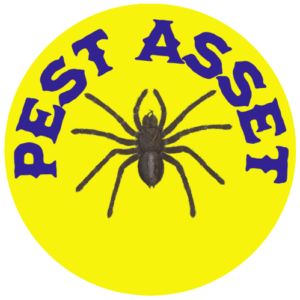Introduction
At Pest Asset, we understand the importance of providing valuable information to our readers. In this comprehensive guide, we will delve into the topic of carpenter ants and shed light on the potential dangers associated with their presence. As a trusted authority in pest control, we aim to equip you with the knowledge you need to protect your home and loved ones from these destructive pests.
Understanding Carpenter Ants
Carpenter ants (Camponotus spp.) are often mistaken for termites due to their ability to cause significant structural damage. However, unlike termites, carpenter ants do not consume wood but rather excavate it to create their nests. These ants are attracted to moist and decaying wood, making homes and other wooden structures susceptible to their infestations.
Signs of Carpenter Ant Infestation
It is crucial to identify the signs of carpenter ant infestations early to minimize potential damage. Here are some indicators that your property may be under threat:
- Wood Shavings: Carpenter ants leave behind distinctive piles of wood shavings, known as frass, as they excavate galleries within wooden structures. These shavings can often be found near the nesting sites.
- Rustling Sounds: If you listen closely, you may hear rustling or tapping sounds coming from within the walls or wooden components of your home. This noise is caused by the movement and communication of carpenter ants within their nests.
- Sighting of Winged Ants: During the mating season, winged carpenter ants, known as swarmers, emerge from the nest. Spotting these reproductive ants indoors may indicate an established colony nearby.
- Damaged Wood: Infested wood may exhibit hollowed-out galleries, with smooth tunnels carved by carpenter ants. The wood may also appear weakened, as the pests continue to expand their nesting areas.
Health Risks Associated with Carpenter Ants
While carpenter ants do not pose direct health risks to humans, their presence can indirectly impact your well-being. Consider the following factors:
- Structural Damage: Carpenter ants can compromise the integrity of your home’s structure by tunneling through wooden beams, floors, and walls. Over time, this can lead to costly repairs and potential safety hazards.
- Allergies: Although rare, some individuals may experience allergic reactions to carpenter ant bites or their defensive secretions. Symptoms can range from mild irritation to more severe reactions, such as difficulty breathing or anaphylaxis.
- Secondary Pest Infestations: Carpenter ant infestations may attract other pests, such as wood-boring beetles or moisture-loving insects. These secondary infestations can further damage your property and contribute to an unhealthy living environment.
Preventing and Controlling Carpenter Ant Infestations
To protect your home from carpenter ants, it is essential to implement preventive measures and address any existing infestations promptly. Here are some effective strategies:
- Eliminate Moisture Sources: Repair leaks, improve drainage systems, and ensure proper ventilation to reduce moisture levels in and around your home. Carpenter ants are attracted to damp environments, so drying out potential nesting sites is crucial.
- Seal Entry Points: Thoroughly inspect your property for gaps, cracks, and openings that may serve as entry points for carpenter ants. Seal these openings with caulk or other appropriate materials to deny them access.
- Trim Vegetation: Trim tree branches, shrubs, and other vegetation that may come into contact with your home. By creating a gap between the plants and your property, you make it harder for carpenter ants to bridge the distance and establish nests.
- Remove Wood Debris: Clear away any decaying wood, such as fallen trees, logs, or stumps, from your yard. These provide attractive nesting sites for carpenter ants and can increase the risk of infestation.
- Store Firewood Properly: When storing firewood, keep it elevated and away from your home’s exterior. This reduces the chances of carpenter ants using the firewood as a launching point to access your property.
- Consult a Professional: If you suspect a carpenter ant infestation or require assistance with prevention, it is advisable to seek the expertise of a professional pest control service. They can conduct a thorough inspection, recommend tailored solutions, and effectively eliminate the problem.
Conclusion
Carpenter ants can pose significant threats to the structural integrity of your home and indirectly affect your well-being. By recognizing the signs of infestation, understanding the associated risks, and implementing preventive measures, you can safeguard your property from these destructive pests. Remember, early detection and prompt action are key to mitigating damage and preserving the safety and comfort of your home.
At Pest Asset, we prioritize the well-being of our clients and aim to provide valuable information to empower you to protect your home. By following the guidelines outlined in this comprehensive guide, you can proactively address carpenter ant infestations and maintain a pest-free environment.
Remember, prevention is key, and staying informed is essential in the battle against carpenter ants. Stay vigilant, address any signs of infestation promptly, and consult with professionals when necessary. Together, we can ensure the safety and longevity of your home.
Note: This article is for informational purposes only and should not replace professional advice. If you require specific assistance with a carpenter ant infestation, consult a qualified pest control expert.



